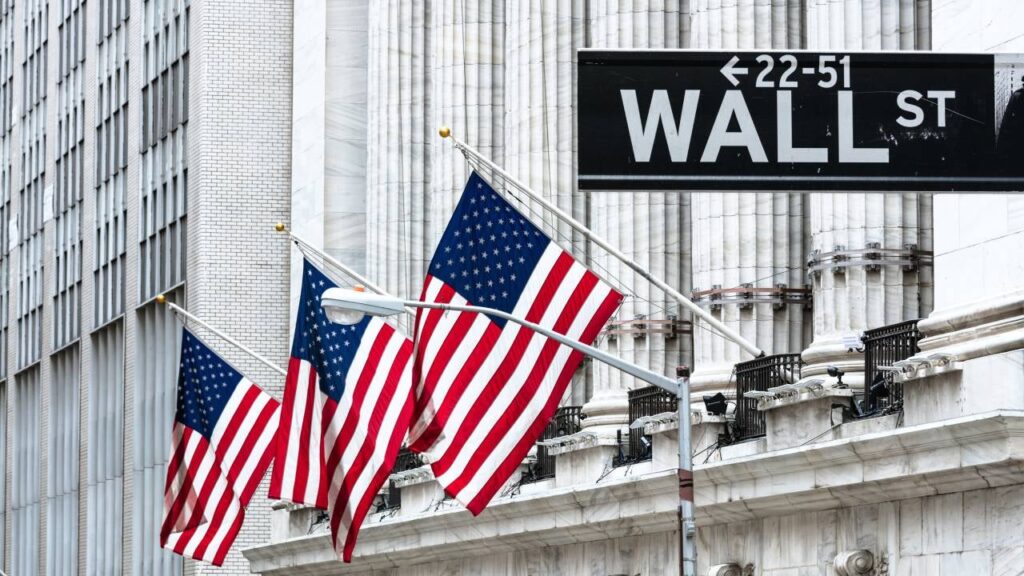Matteo Colombo/Getty Images
Investment strategists surveyed by Bankrate expect Treasury yields to fall slightly lower in the next year following the Federal Reserve’s recent interest rate cut and anticipated future cuts. Bankrate’s Third-Quarter Market Mavens Survey found that market pros forecast the 10-year Treasury yield to decline to 3.53 percent over the coming 12 months, down from last quarter’s projection of 4 percent.
Bigger questions also remain front and center for many strategists and investors. Two-thirds of respondents say a “soft landing” for the economy is likely following the Fed’s moves, while 17 percent said the government’s intervention would likely fail and cause a recession.
“Reflecting multiple sources of uncertainty, there are some reasons to be cautious about the outlook,” says Mark Hamrick, Bankrate’s senior economic analyst. “Even so, the resilience of the U.S. economy and the stock market’s ability to power through multiple threats taken together have been nothing short of remarkable. As the saying goes, ‘Past performance is no guarantee of future results.’ However, history, including historical returns, can be a more useful guide over the long term.”
With the U.S. presidential election also approaching, here’s a closer look at how these unknowns might shape the bond market and others in the coming months, according to Bankrate’s Market Mavens.
Forecasts and analysis:
This article is part of a series discussing the results of Bankrate’s Third-Quarter 2024 Market Mavens Survey:
Expect the 10-year yield to decline over the next year
The 10-year Treasury yield has mostly stayed below 5 percent over the past 20 years. It hit a historic low of about 0.5 percent in August 2020 during the COVID-19 pandemic after the Fed slashed interest rates in an attempt to boost the economy. As the economy rebounded, yields began to rise (bond yields move inversely to bond prices). In 2023, the Federal Reserve’s move to tame inflation through aggressive rate hikes led to an increase in yields, which has continued to impact the economy throughout 2024.
Investment strategists surveyed by Bankrate see the 10-year Treasury yield at 3.53 percent at the end of October 2025. That’s down from the second-quarter 2024 average of 3.96 percent.
In a normal economy, the 10-year Treasury yield typically ranges between 2 to 4 percent. This range reflects moderate economic growth and mostly stable inflation. Historically, yields close to 2 percent suggest weaker economic conditions or low inflation, while yields near 4 percent indicate too much growth and inflation. This puts a 3.53 percent yield prediction in line with a normalizing economy and somewhat softer economic environment, compared to 2022 when monetary policy was extremely tight and yields were high.
Investing in bonds for a lower-rate environment
Amid all of the economy’s uncertainties, investors should keep a level head along with their long-term financial goals in mind. The importance of diversification and rebalancing portfolios plays a huge role when it comes to market ups and downs.
“If investors only do one thing, they should rebalance portfolios back to their targeted allocations,” says Chris Fasciano, senior portfolio manager at Commonwealth Financial Network. “Additionally, we would recommend that investors stay balanced across asset classes, market caps, styles, geographies, credit quality and duration to help navigate any potential volatility going forward due to a change in the consensus on the outlook for the economy, inflation and the Fed.”
Bottom line
Bankrate’s Market Mavens are generally in alignment with the consensus of other professional investors in that trying to time the market would be unwise for those with a long-term perspective, says Hamrick. At the same time, it would be prudent to set investing expectations over the short and intermediate terms.
Editorial Disclaimer: All investors are advised to conduct their own independent research into investment strategies before making an investment decision. In addition, investors are advised that past investment product performance is no guarantee of future price appreciation.
Read the full article here
















